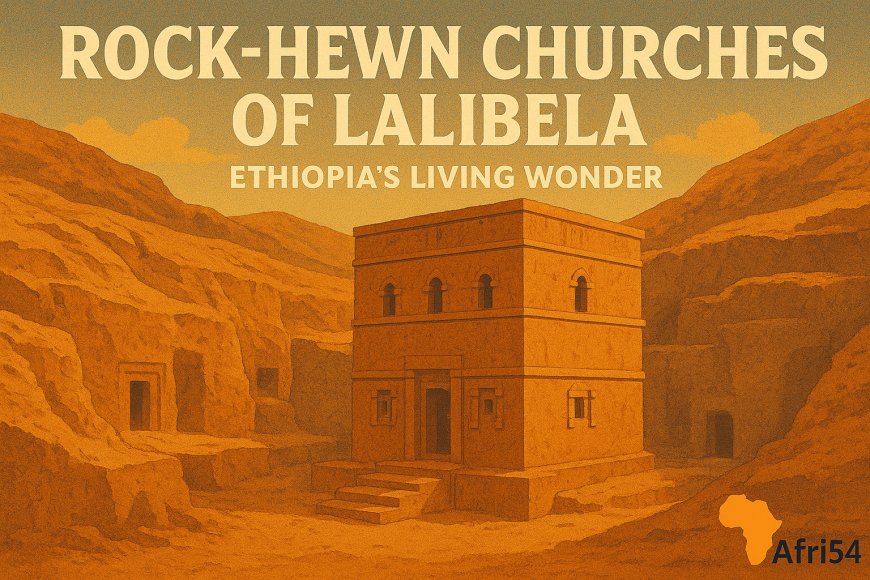Rock-Hewn Churches of Lalibela: Ethiopia’s Living Wonder
Discover the Rock-Hewn Churches of Lalibela in Ethiopia — 12th-century monolithic churches carved into rock, still active centers of worship and a UNESCO World Heritage Site.

Reading Time: ~6 minutes
High in the mountains of northern Ethiopia lies Lalibela, a town that has become synonymous with faith, devotion, and extraordinary craftsmanship. In the 12th century, King Lalibela of the Zagwe dynasty commissioned a series of monolithic churches carved directly from solid rock. Today, these remarkable structures are among the most awe-inspiring sites of African and Christian heritage.
The Vision of King Lalibela
According to tradition, King Lalibela sought to create a “New Jerusalem” in Ethiopia, offering Christians a sacred pilgrimage site at a time when access to Jerusalem was difficult. The result was a network of 11 churches, each hewn from volcanic rock and intricately designed to reflect biblical symbolism.
The Masterpiece of Rock Architecture
The churches were carved top-down into the earth, leaving entire structures freed from the rock around them. Highlights include:
-
Bete Medhane Alem – The largest, believed to be the world’s biggest monolithic church.
-
Bete Giyorgis (Church of St. George) – Famous for its cross-shaped design, carved into the ground and perfectly symmetrical.
-
Bete Maryam – One of the oldest, richly decorated with frescoes and carvings.
Passageways and tunnels connect the churches, symbolizing the spiritual journey between earth and heaven.
Spiritual and Cultural Significance
The Rock-Hewn Churches are not just monuments of the past — they remain active places of worship. Priests, monks, and pilgrims fill the courtyards and chambers, chanting prayers and performing rituals that have continued for centuries. This living tradition makes Lalibela unique: it is both a museum of history and a center of spiritual life.
UNESCO World Heritage Site
In 1978, the churches of Lalibela were recognized as a UNESCO World Heritage Site for their cultural and religious importance. Conservation efforts continue to protect these fragile structures from erosion and weathering, ensuring their legacy for future generations.
Why Lalibela Matters
The Rock-Hewn Churches stand as a testament to Ethiopian ingenuity, devotion, and resilience. They embody Africa’s role in the early Christian world and remain a source of national pride and global wonder.
Final Thoughts
Visiting Lalibela is more than a journey to see stone churches — it is a step into a spiritual landscape where history, faith, and artistry are inseparably woven together.
Have you listed your business on Afri54?
Afri54 exists to solve a fundamental challenge faced by millions of African businesses: lack of visibility. Whether you’re an automobile part seller in Lagos, a local attire manufacturer in Kigali, a coffee exporter in Addis Ababa, or a mobile phone supplier in Accra, you deserve to be seen. Join now






















